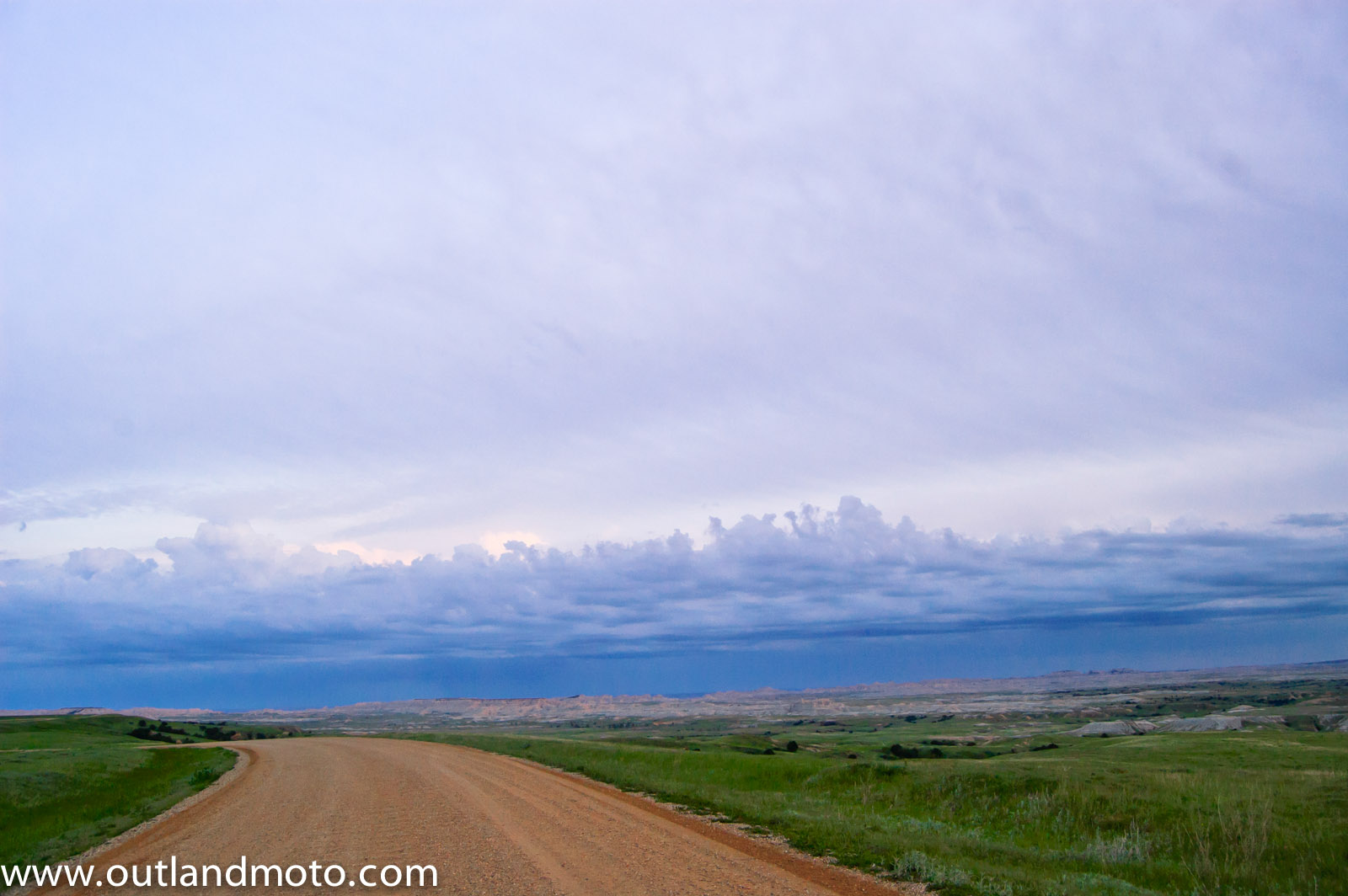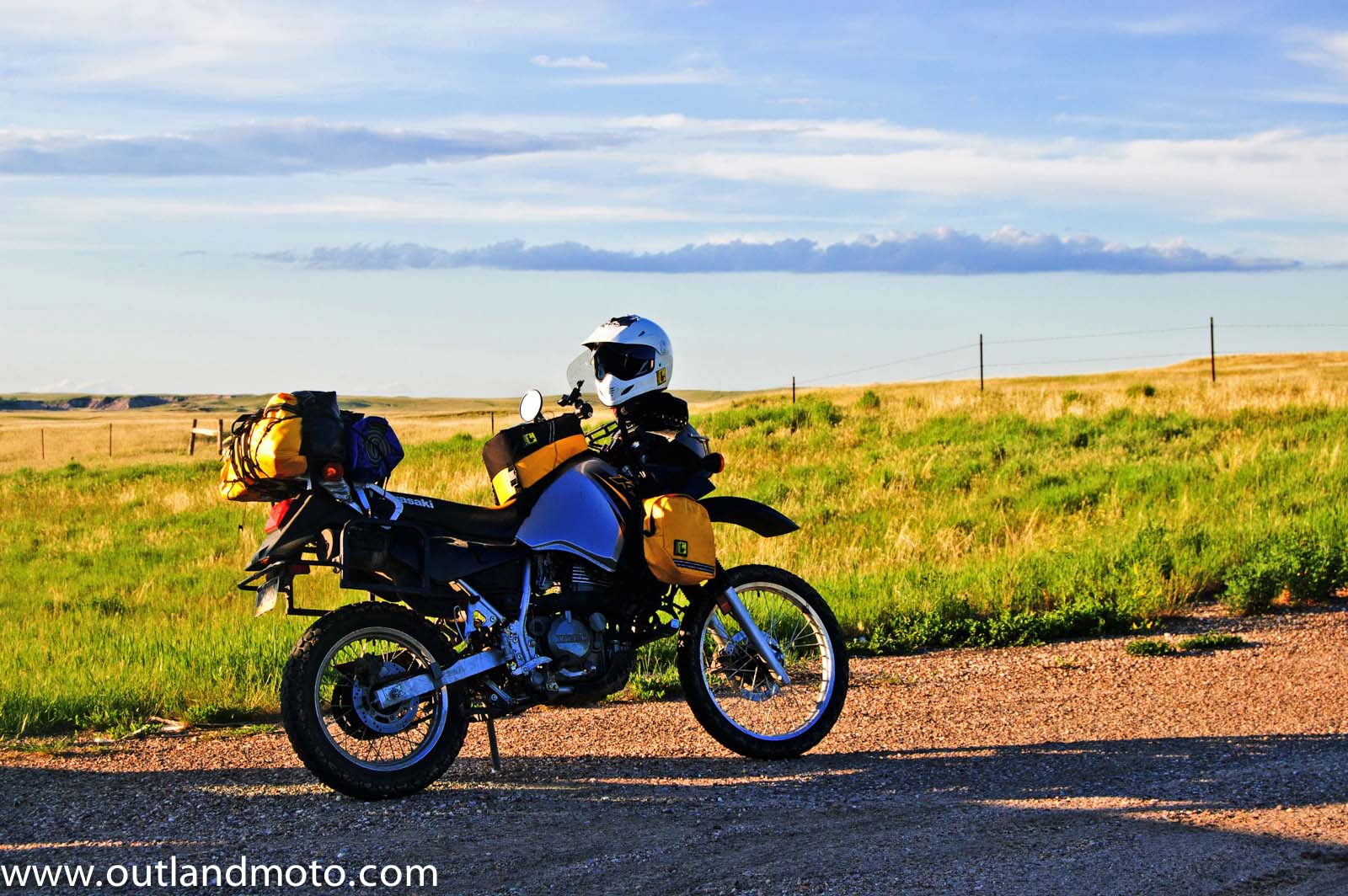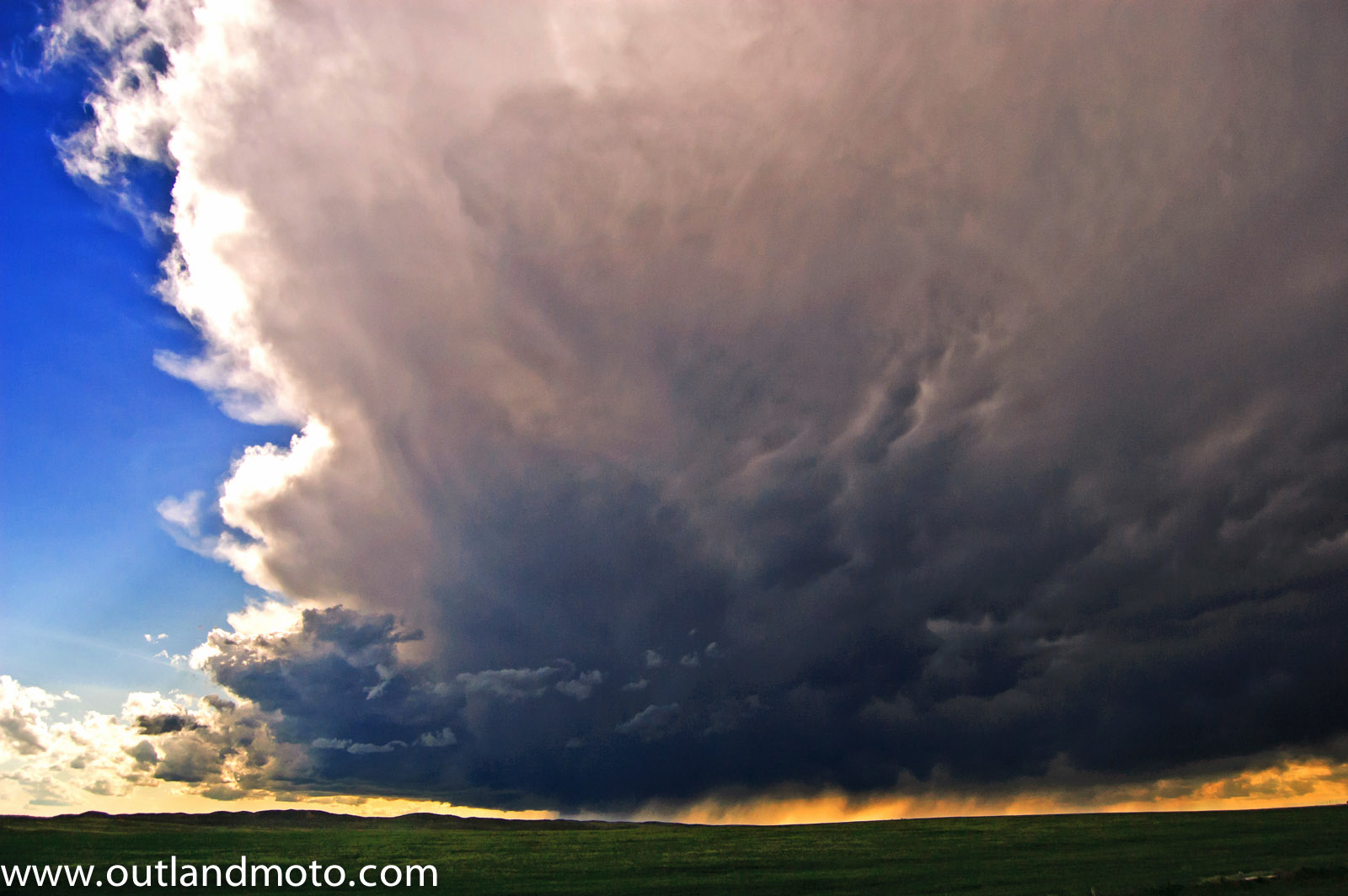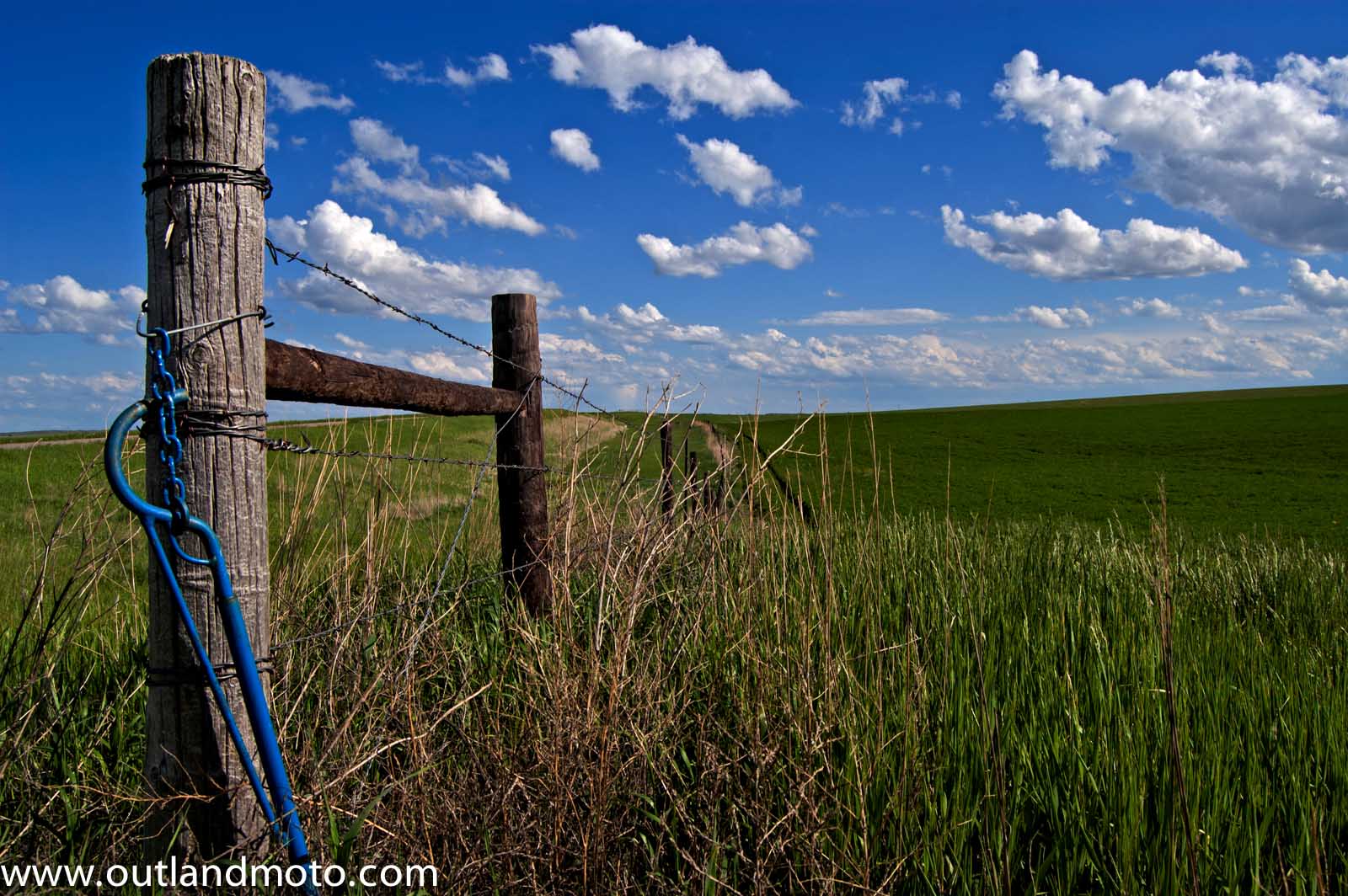
Words by Jim Vota
Photography by Kristen Vota & Jim Vota
Morning arrives in the Badlands and I wake with a sense of revival. My rider friend, Steve is up and breaking down his tent. Our other friend, Craig, is packing some of his things onto his motorcycle. It is early and the sun is just peaking its head over the horizon. As I exit my tent, I am presented with a scene that, to me, makes the entire journey worthwhile. The sun has not yet reached our camp and the air is still cool. I can tell from the air that it is going to be a very hot day, so this next hour is doubly as precious. The smell of the night’s dew evaporating clears my airways and I make sure to breathe deeply in an attempt to place this feeling into my long-term memory. The sights and smells of the morning have been unique as we have passed through this country. But this morning ranks at the top and I start to feel a subtle sense of fear that I might one day forget this experience. The sun has illuminated the hills to the west of our camp and I can see bison lining the tops of them. Some are in packs of thirty or more. Some of them are standing alone, enjoying their morning breakfast of dried grass that covers this area. Periodically a pack runs from one hill to another for reasons that are not evident to me. Maybe it is just their form of morning calisthenics.
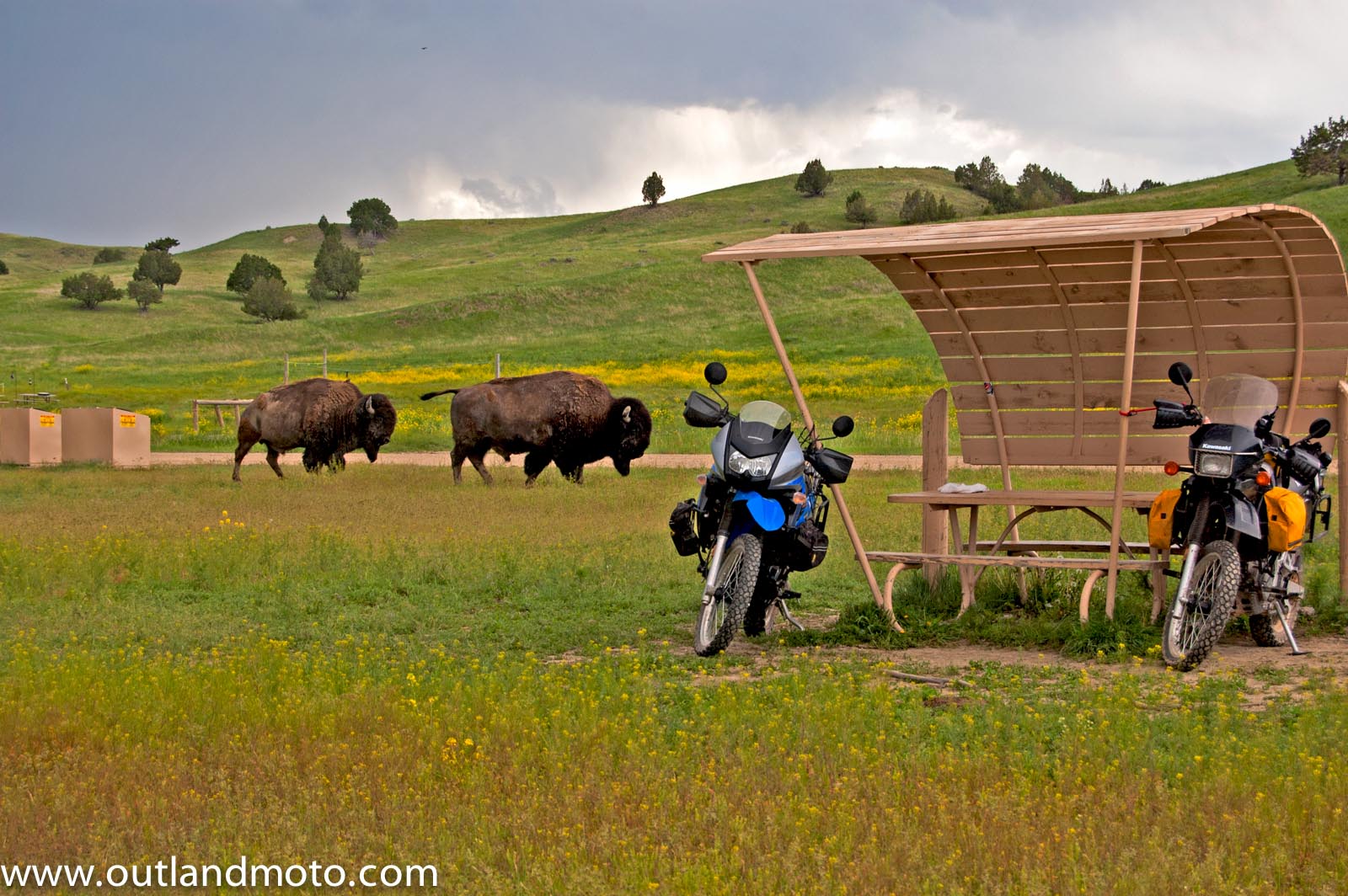
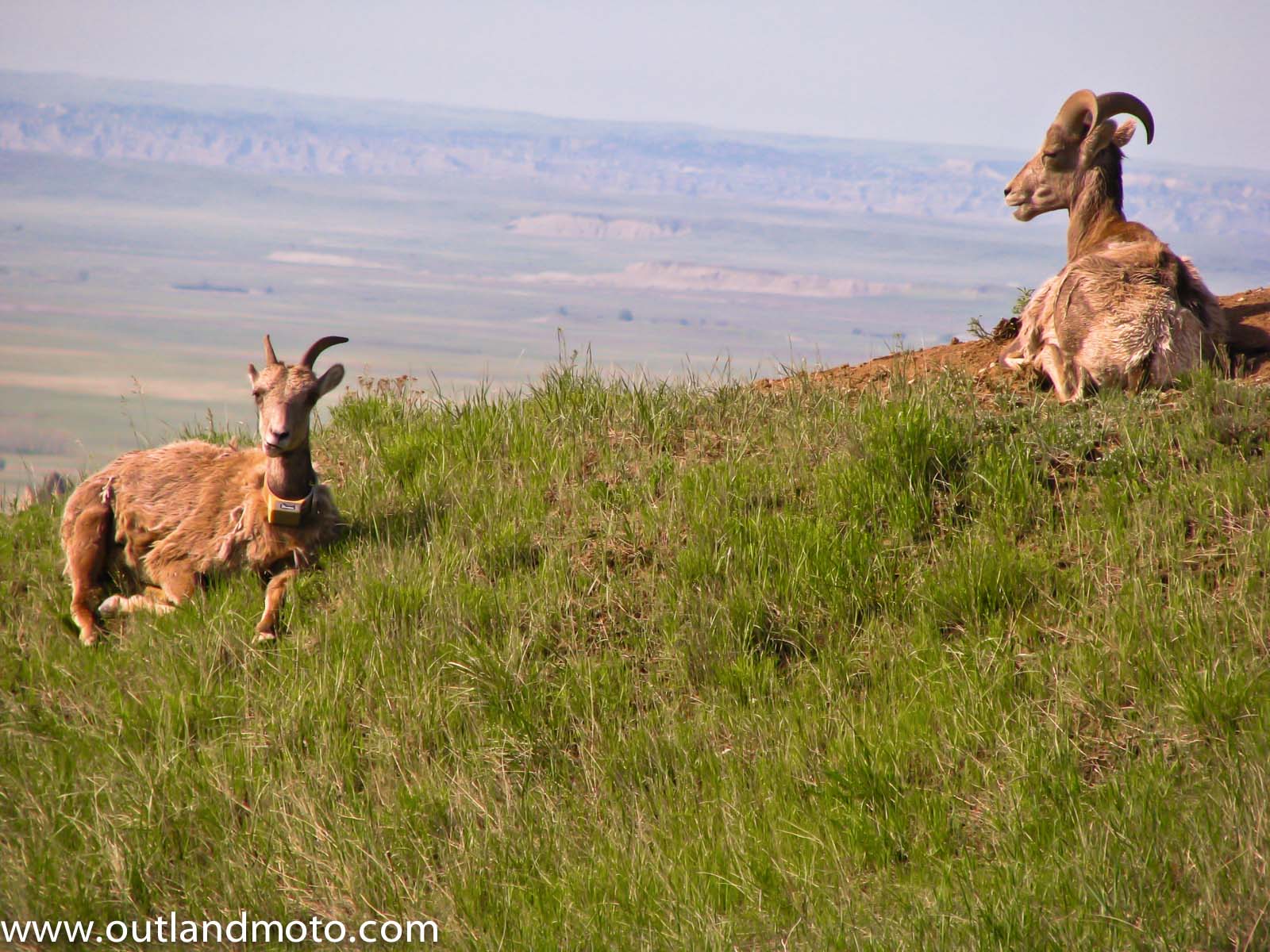
I am perplexed as to how I will explain these animals to people back home, and I am reminded of what a unique treasure we came so very close to losing during the early years of this country. As I watch their morning activities, I marvel at the incredible smoothness of their movements, the lack of caution they exercise as some of them move closer to our camp. But what astonishes me the most is the perfect combination of grace and speed they possess as they move from hillside to hillside. As they are standing still, the bison look heavy and unmovable. They are slow and calculating in their movements. Yet as they begin to move, they seem to float an inch above the ground, showing no effort in navigating their enormous bodies through the dusty, uneven grounds that exist here. In a pack, the individual movement of each bison is not noticeable and the view of a pack moving over the hillside is a scene that I can only describe as God pulling a sheet over the horizon.
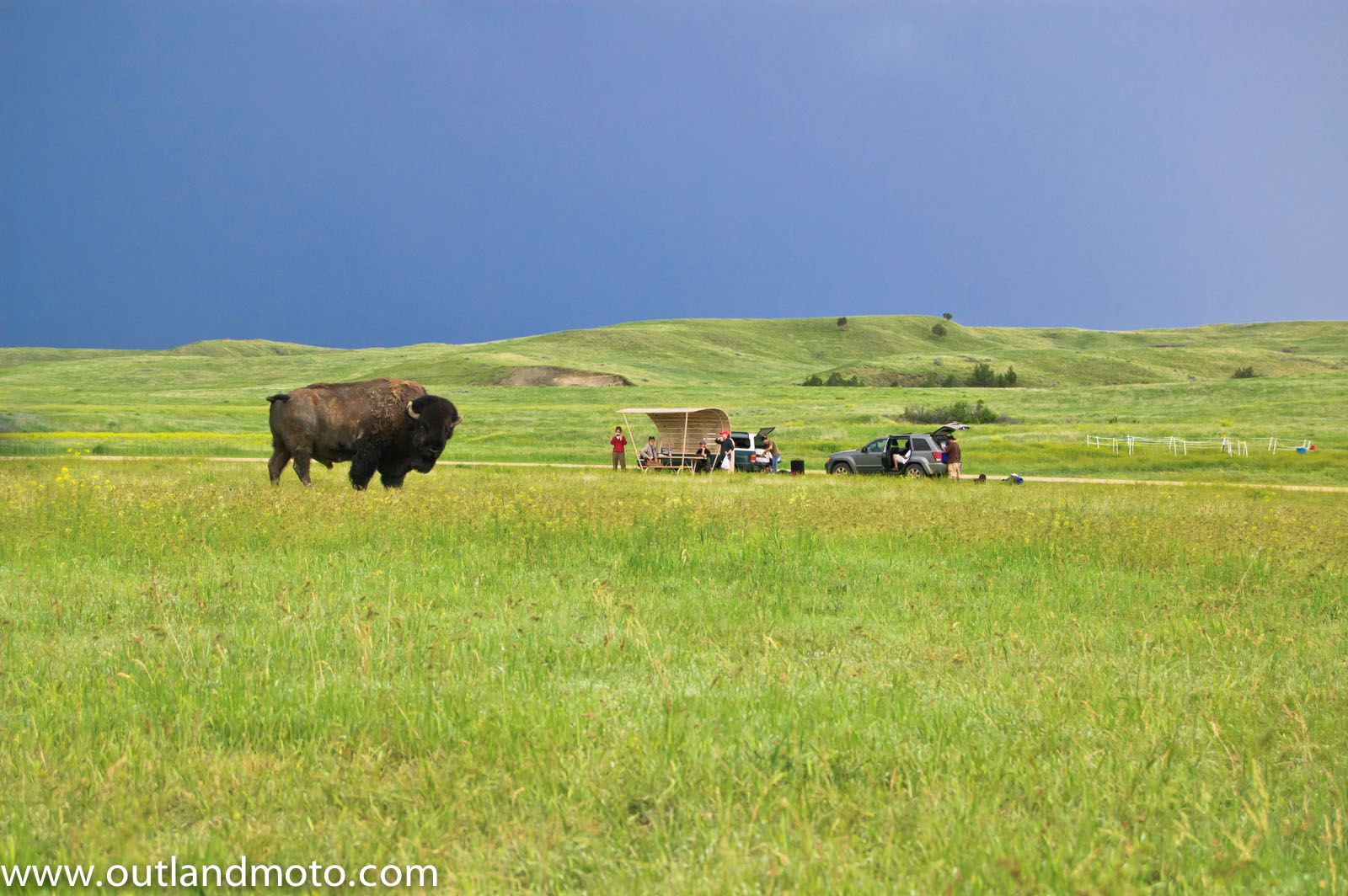
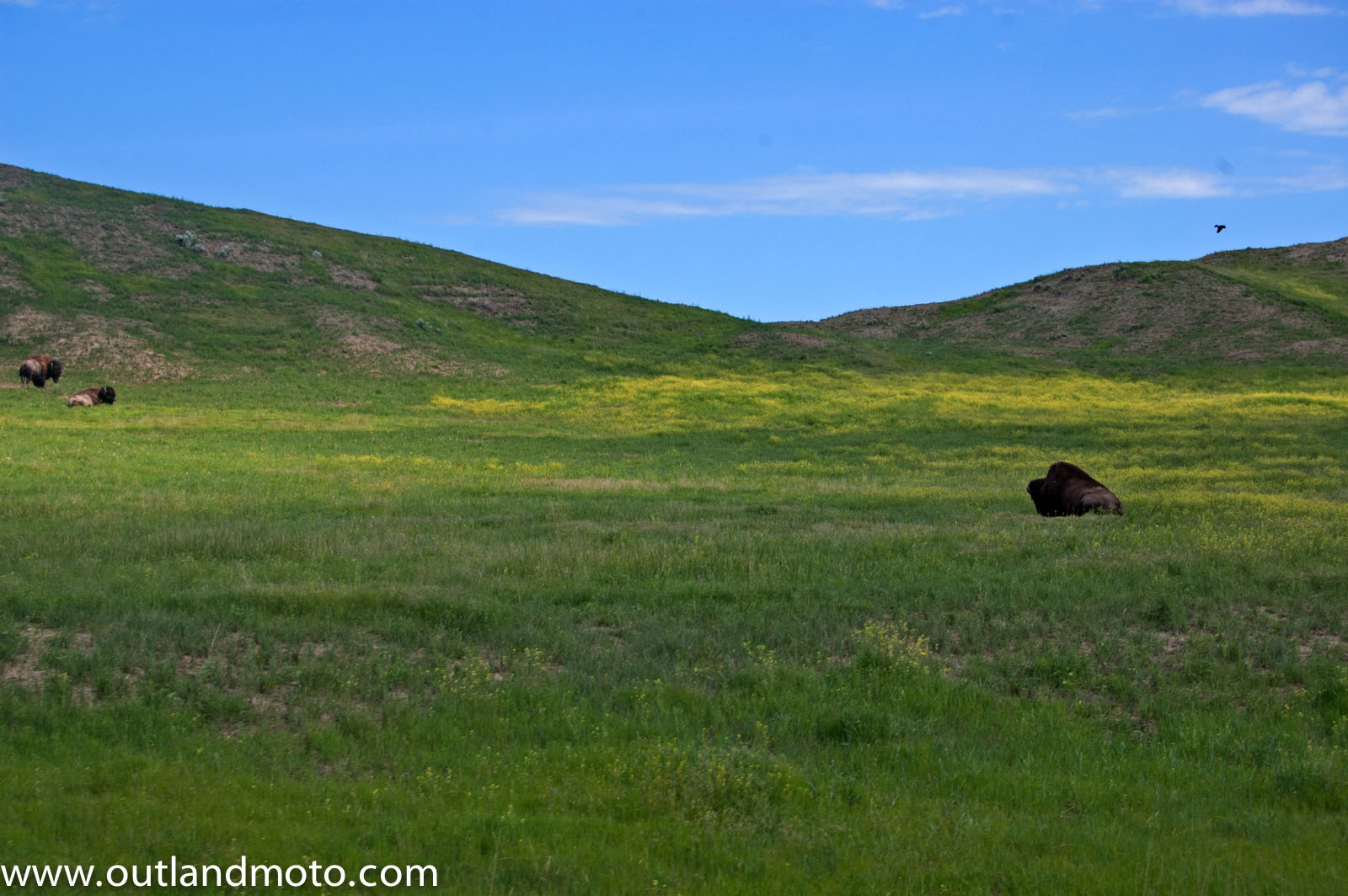
The sun is just about to expose the plains to the east of our camp, but for now they are still shaded. The hundreds of small dirt mounds made by the prairie dogs in this area are all that are illuminated right now. The prairie dogs are scurrying from one hole to the other, chirping as if they were waking everybody up for the day. All the while I can hear the underlying sound of water gently flowing down the river, which is nearby. I feel like I could stand here forever and just watch the wildlife moving and communicating with one another, each in there own unique way. But I am also anxious to get started on today’s ride, which is to take us to the location of Wounded Knee and the Indian Reservations of Pine Ridge and Rosebud. This is a day that I have anticipated with a certain amount of trepidation throughout our journey. I want to see this place, yet I have the sense that what I will see there might shame me. In any case, I feel that I owe it to the people of those Reservations to go and pay homage to what these people suffered at the expense of “American progress.”
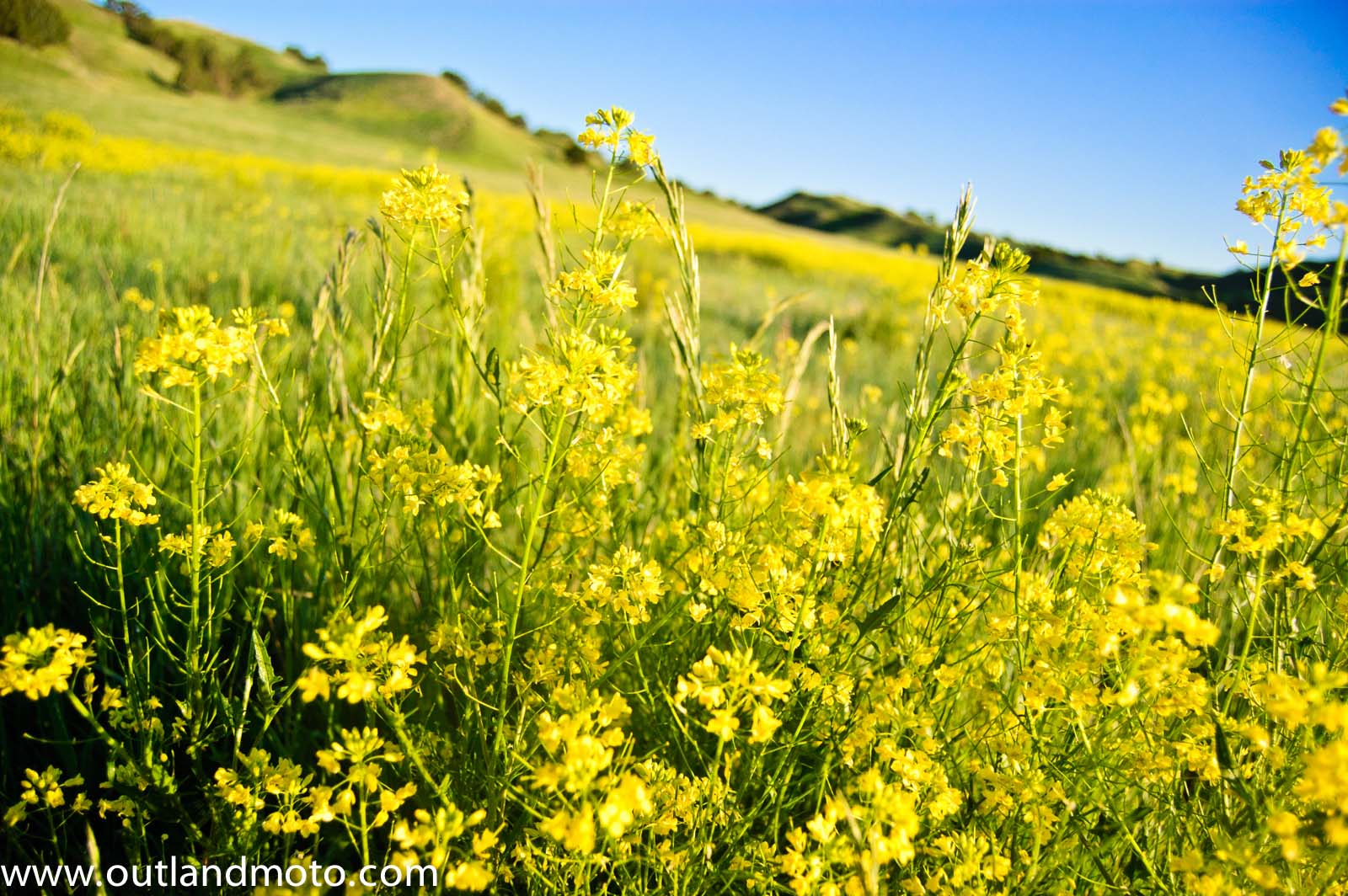
I pull the fly from my tent and hang it over the front of my motorcycle, grab my camp stove, my Mountain House camp breakfast (freeze dried scrambled eggs with bacon), my water, and proceed to prepare my breakfast. As I am waiting for my breakfast to be ready, I take the support poles from my tent and return them to their pouch. I take the small amount of personal items that I removed from my motorcycle the night before and return them to their precise places. By the time this is done, my breakfast is ready to eat and I heat up some more water for coffee. This is the process of which has become almost automatic as we have progressed through this country.
EVENING (6:30 PM):
Find nearby camp. Remove tent from motorcycle. Choose level ground and cover with tent foot. Roll out tent and secured tent poles and stakes. Place sleeping bag, sleep mat, riding jacket, shaving kit, and next day’s clothing in tent. Remove camp stove, mess kit, food, AND COFFEE from motorcycle, then prepare dinner. Recap the day with Craig and Steve. Secure food and cooking materials. Retire to our tents.
MORNING (6:00 AM):
Wake up (no alarm clock needed). Change clothes in tent. Exit tent; return tent items to motorcycle and retrieve cooking materials. PREPARE COFFEE FIRST. Enjoy coffee while cooking breakfast. Remove fly from tent and hang over front of motorcycle to dry. Dismantle poles from tent and return to pouch. Remove tent stakes from ground and return to pouch. Eat breakfast. Roll up tent with poles and stakes inside. Secure tent on motorcycle. Break down cooking materials and secure on motorcycle. Confirm days route with Craig and Steve. Ride!
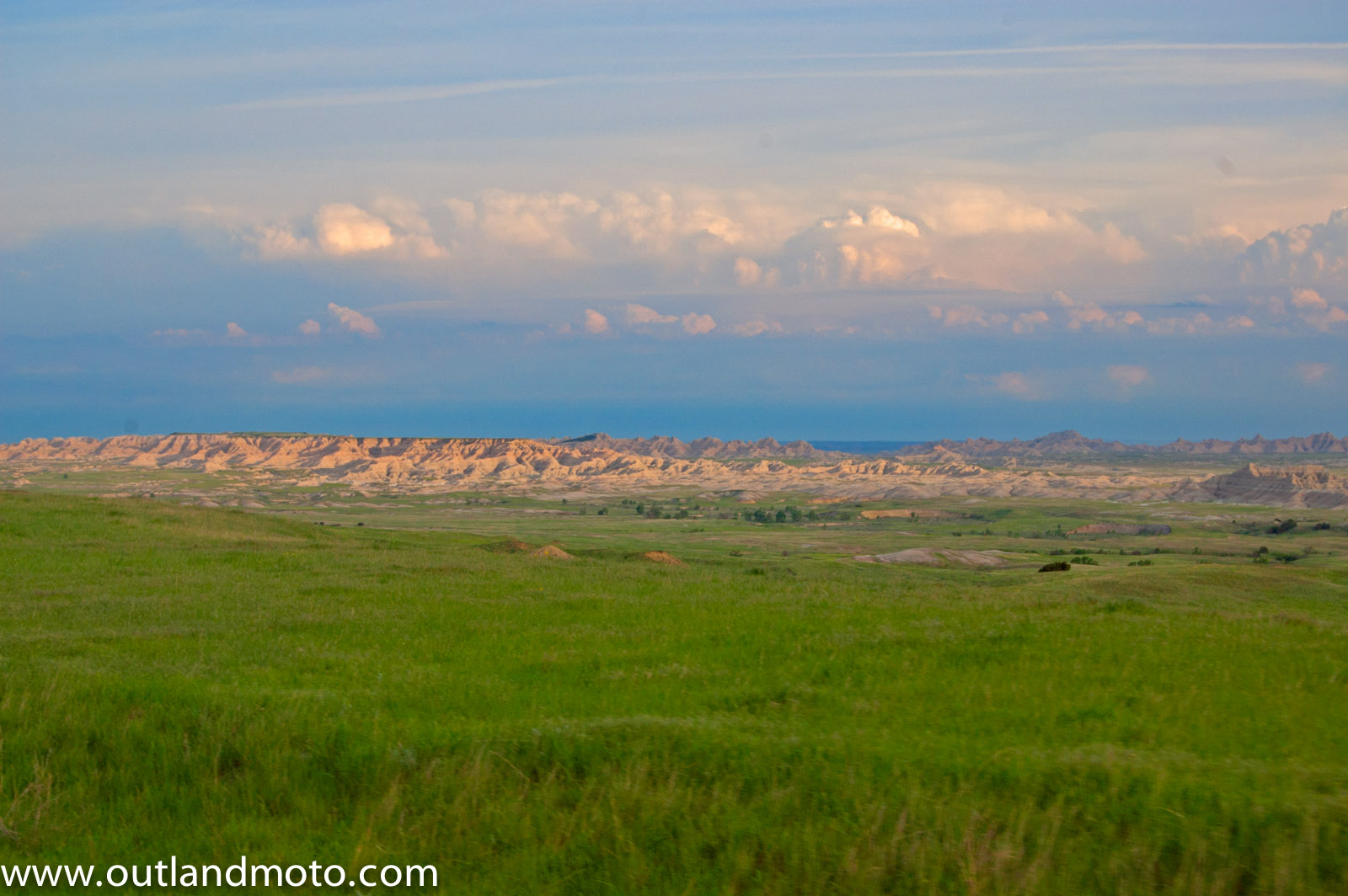
These processes have become all that there is to us, and each day’s movements are determined with these processes in mind. From the moment we break camp in the morning to the moment we make camp in the evening, each decision is based on the ability to perform these tasks successfully. This may seem taxing, but it is not. Rather it creates a set of priorities that are simple and unadulterated. Point A to point B. Food, fuel, and water (not always in that order) are all that influence our motivations now.
Steve is already eating, and Craig has walked out into one of the fields to capture some photos of the animals’ morning rituals, breakfast bar in one hand, camera in the other. Communication with each other is minimal in the mornings compared to those in the evenings and is much more utilitarian in nature. How did we sleep? Where are we going today? And how will we get there? This morning is not much different, though there is a light spirited discussion of the slight stampede of bison that passed through our camp around 3:00 AM. We chuckle at our good fortune in not being trampled by the startled bison and present our individual thoughts on the experience to each other. Looking at the map, we decide to take the long way out of Badlands National Park and push on towards Wounded Knee. This stop is important to all of us, and we agree to set aside as much time as will be needed for it. Therefore, we expect this day’s ride to be short in terms of the mileage we will cover. With everything secured on our motorcycles, we double-check the camp area for any remnants of our stay that we inadvertently left behind. Everything seems OK, so we mount our motorcycles and begin our departure.
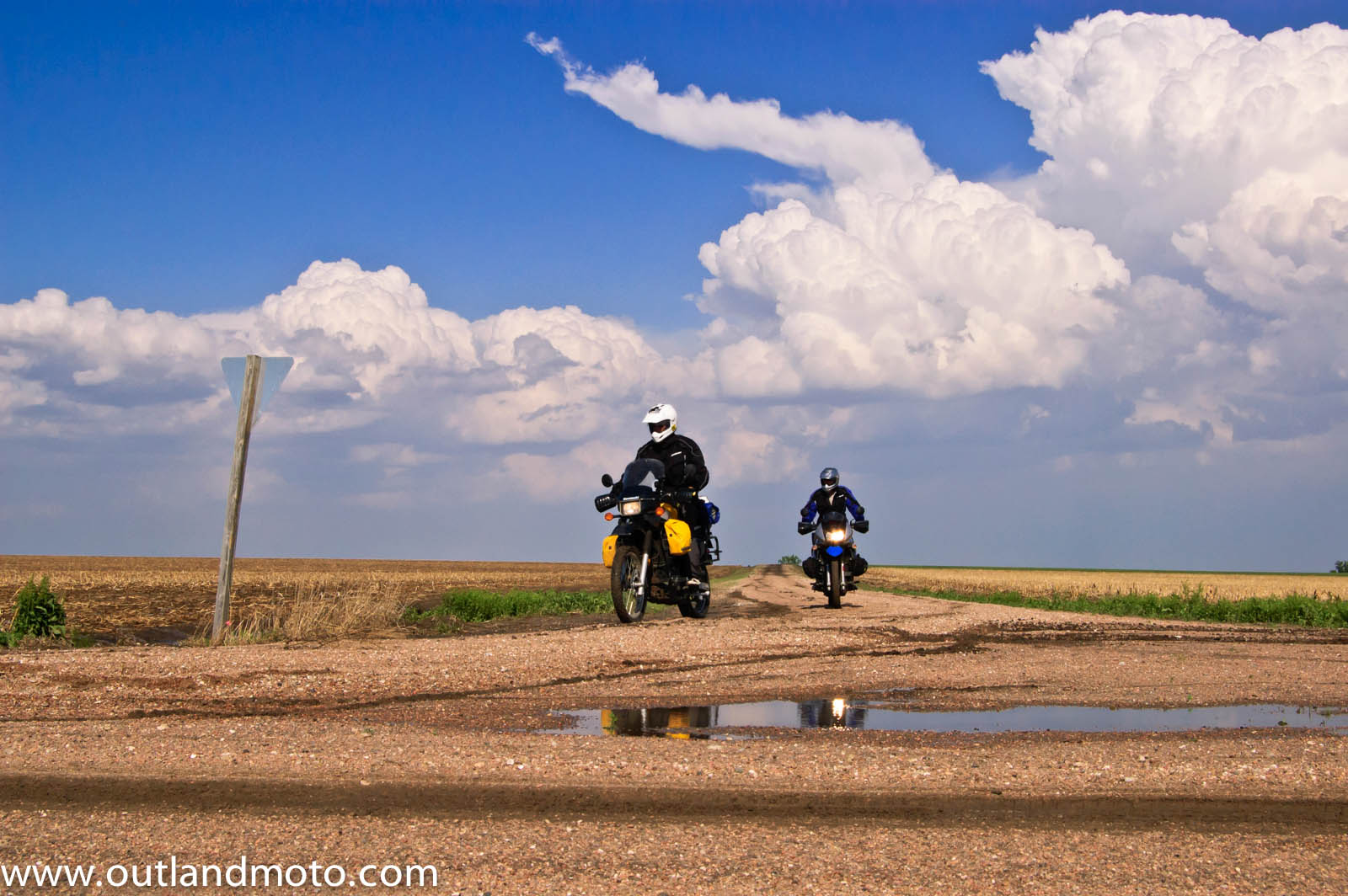
Steve, as the implicitly designated navigator on this journey, is out in front. I am second, and Craig holds up the rear. As we ride down the dusty, sun-dried road that will take us through the park, we cross a pack of bison that seem otherwise uninterested in our desire to pass and they move slowly as they cross the road. This is wonderful, yet unsettling at the same time. We had been advised that bison can get aggressive and it is apparent now that we will need to ride through this pack if we want to get moving anytime soon. I can see that there are some calves in the pack and am not interested in getting between one of them and its mother. We can see an opening develop in the pack that will allow us to move through them in a somewhat safe manner. We move slowly towards the pack in order to converge on that opening. There are members of the pack that are lining a small hill just above the road. They seem to be watching over everything and have locked their eyes on us. They do not seem aggressive in their stances but they are close enough that, should we act up, they will handle it. We are incredibly close to these majestic animals now, closer than we have been before. The detail of their faces and coats is clear and I can hear their grunts as we motor through the pack. I feel quite timid, yet also fortunate that I have the opportunity to be so close to these beasts. I just hope they don’t get spooked. We move slowly through the pack without any altercation and move on down the road. We do not get but 200 yards when we come up on one incredibly large bison, standing right in the middle of our path. Steve beeps his horn in the hopes that the bison will move, but it is unaffected. We stop. The bison looks at us seemingly without any concern for its safety (or ours), and then slowly turns to move in the same direction we are going. We follow at a safe distance. As the bison moves towards the left side of the road, we begin to move closer in order to attempt a pass. Suddenly the bison begins to run and continues to do so at our 10:00. It does not seem scared or aggressive. It is just there, running with us. This continues for about a half mile and I am astonished by the beauty of this moment the entire time. What a way to start the day! I am completely energized! This is one of those “one-of-a-kind” moments that few people get. I feel a kinship with this land, with the animals. I am filled with good fortune. Quickly, the bison darts across the road in front of us and into a valley to our right. The ground is steep and uneven, yet the bison takes it with the graces of tumbleweed floating across the ground. Perfect!
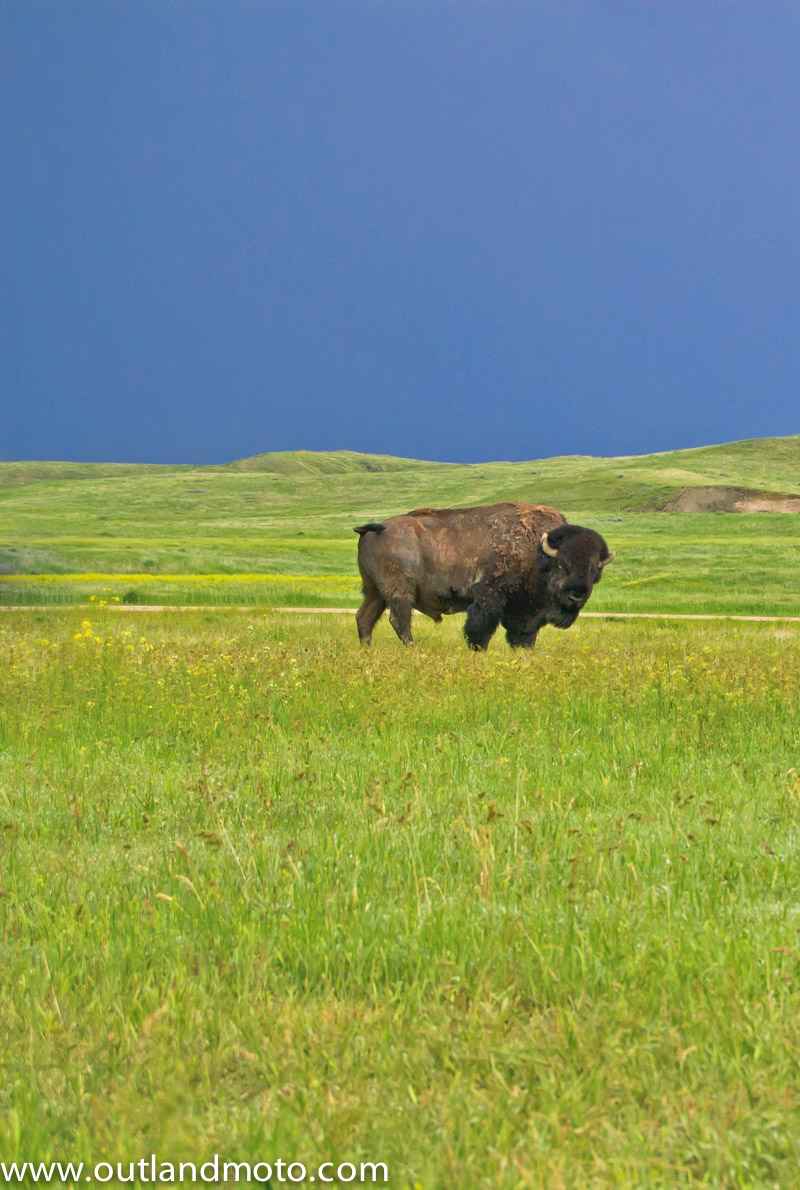
Steve stops for a moment to give me a look of amazement at this event. I return the look to him, knowing that we share the same appreciation for what had just occurred. We both turn to Craig, who is smiling in his helmet. We all get it. No words are spoken. There aren’t any needed. This was a brilliant moment and we know it. All is well.
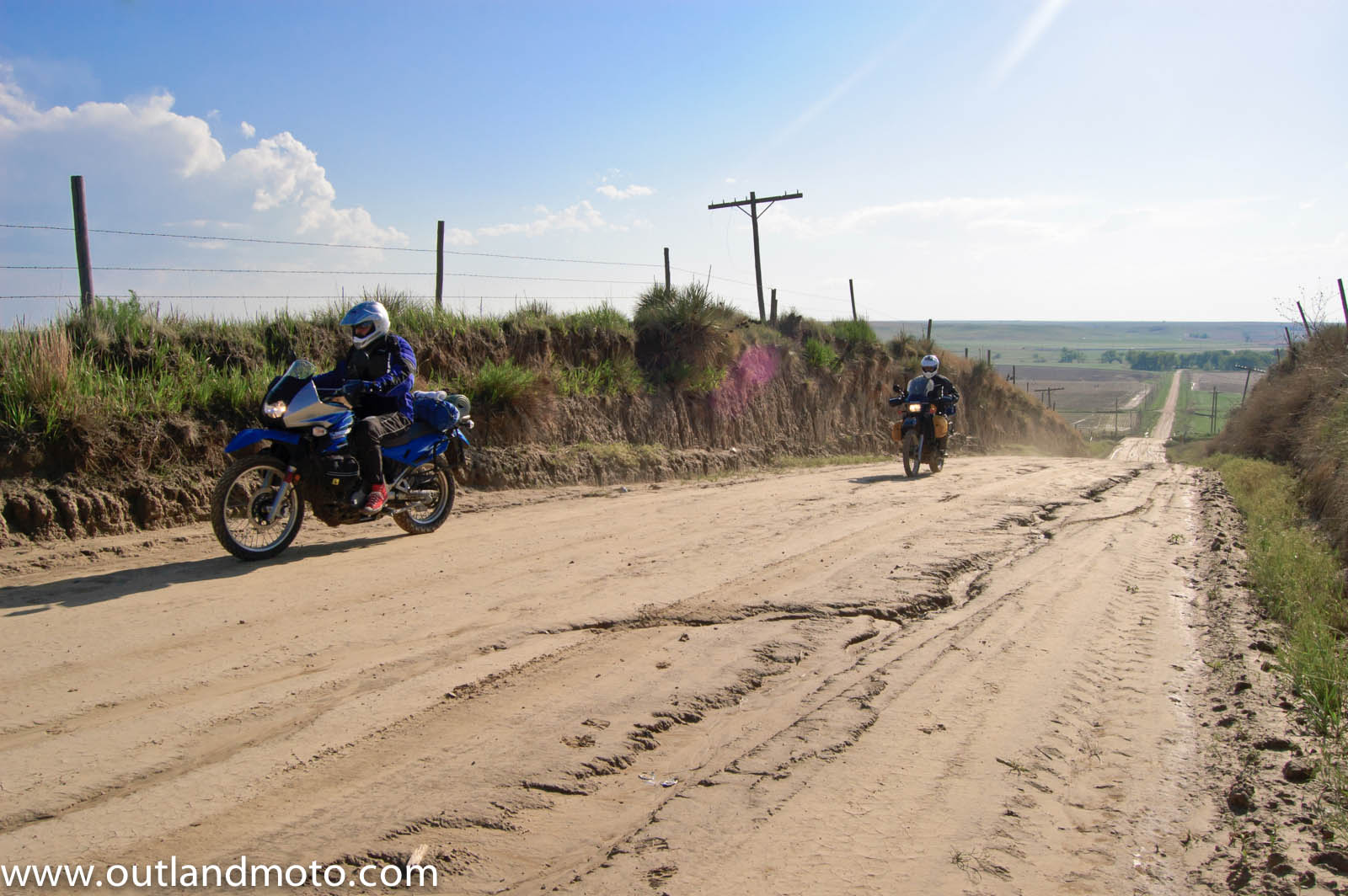
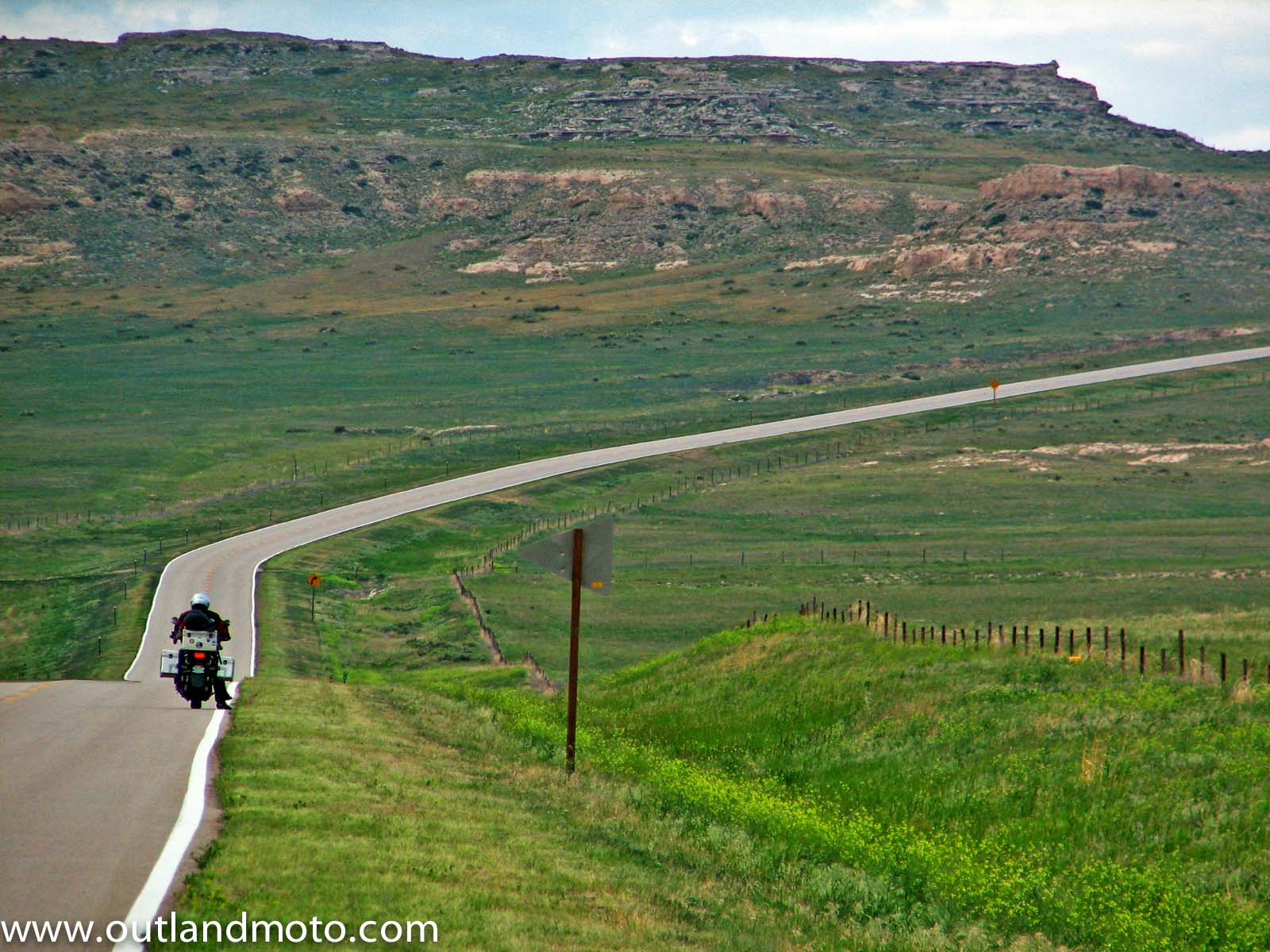
We exit the park and push on to the Pine Ridge Indian Reservation. The land is becoming drier as we get closer. Grass is less green and abundant. The population seems to dwindle. And the condition of the structures seems to decrease by the minute. Where are we headed? My familiarity with what I see is disappearing. I feel like a soldier marching towards his first battle. There is something waiting for me on the lonely road ahead. Am I ready? Can I handle it? These types of questions are running through my head. Not only am I not prepared, but I have no idea for what I need to be prepared. For some reason, I feel that there is something ahead. Good, bad, I do not know. But there are subtle signs in the landscape that provide a foreshadowing that I am unable to pinpoint. As we cross the border of Pine Ridge, I feel as though I have passed through some physical barrier between two dimensions. The land turns brown and appears to be devoid of people or structures. We do pass the occasional Native American, selling charms and dream catchers along the side of the road. I feel confusion as we pass them. There does not seem to be a vehicle of any kind that brought them there, and I do not see any homes nearby that would warrant the trek they made to that spot at which they stand. I wonder where they came from and how long it must have taken for them to do so. This is truly an odd place and I feel, in some way, that I am no longer in America, like I have crossed over into some other country. I do not spend that much time thinking on this, as I am preoccupied with getting to the site of the Wounded Knee Massacre, and my mind swims in my helmet with anticipation of this experience.
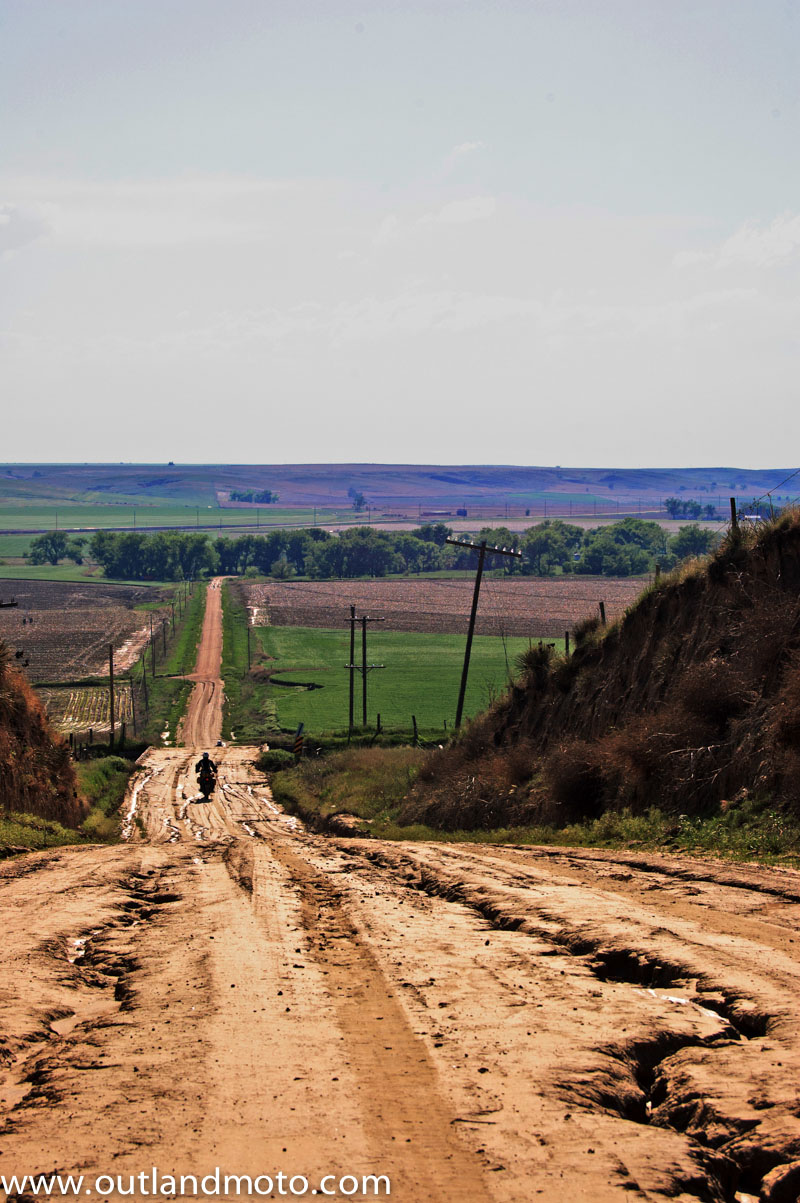
Wounded Knee has got to be an experience that ranks at the top of deeply affecting experiences that could be had. In order to see this area for what it really is, one may have to accept that our country IS guilty of certain acts that, in retrospect, are shameful; something that many of us are not eager to admit. It does not need to conflict with our love of country to recognize that it is not perfect and has not shined with compassion every moment of its existence. Additionally, one must get past the physical appearance of the Reservation and forget what he/she knows to be true (or at least what he/she were told was true). What the Reservation presents to our eyes and the values that one places on that can drastically affect what his or her interpretation of this place will be. There is an emotional roller coaster that can occur there, that unfortunately defies explanation. The words that I will choose here will hopefully come close to representing the experience, without damaging it for anybody who may read this and visit this place in the future.
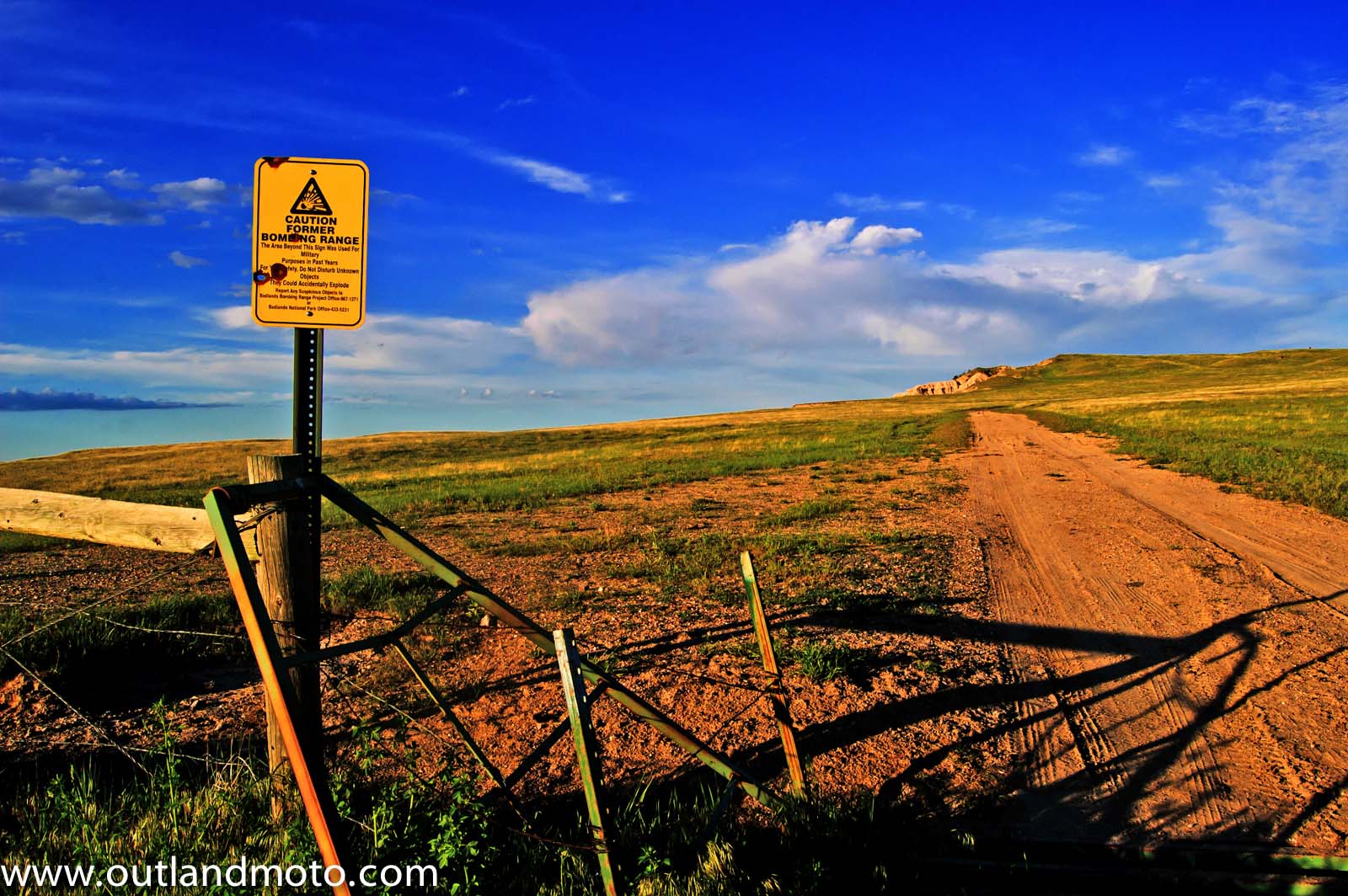
We enter the Pine Ridge Indian Reservation in the early afternoon, around 1:00 PM. Pine Ridge surrounds the area where the massacre of Wounded Knee occurred. We make our way through the empty fields and randomly placed mobile homes, passing the occasional peddler on the roadside, selling charms, necklaces and dream-catchers, and move onto the location of what is known as the Wounded Knee Massacre. None of us have been here and really have no idea what to expect, but what we witness on the way to it is tantamount to abject poverty, and I begin to feel a subtle sense of shame, as if I should not be passing through this land; like I am a trespasser or some sort of unwelcome guest. I have an idea of what happened here in the late 1800’s from what would be considered an academic point of view, but now that sterile, intellectual knowledge is coupled with the emotional component needed to make it real. I do not feel well about being here. I do not feel safe. Not unsafe in that I am worried for my physical security. Rather, I can sense that there is something coming that is going to be either unpleasant or shameful to my culture and me.
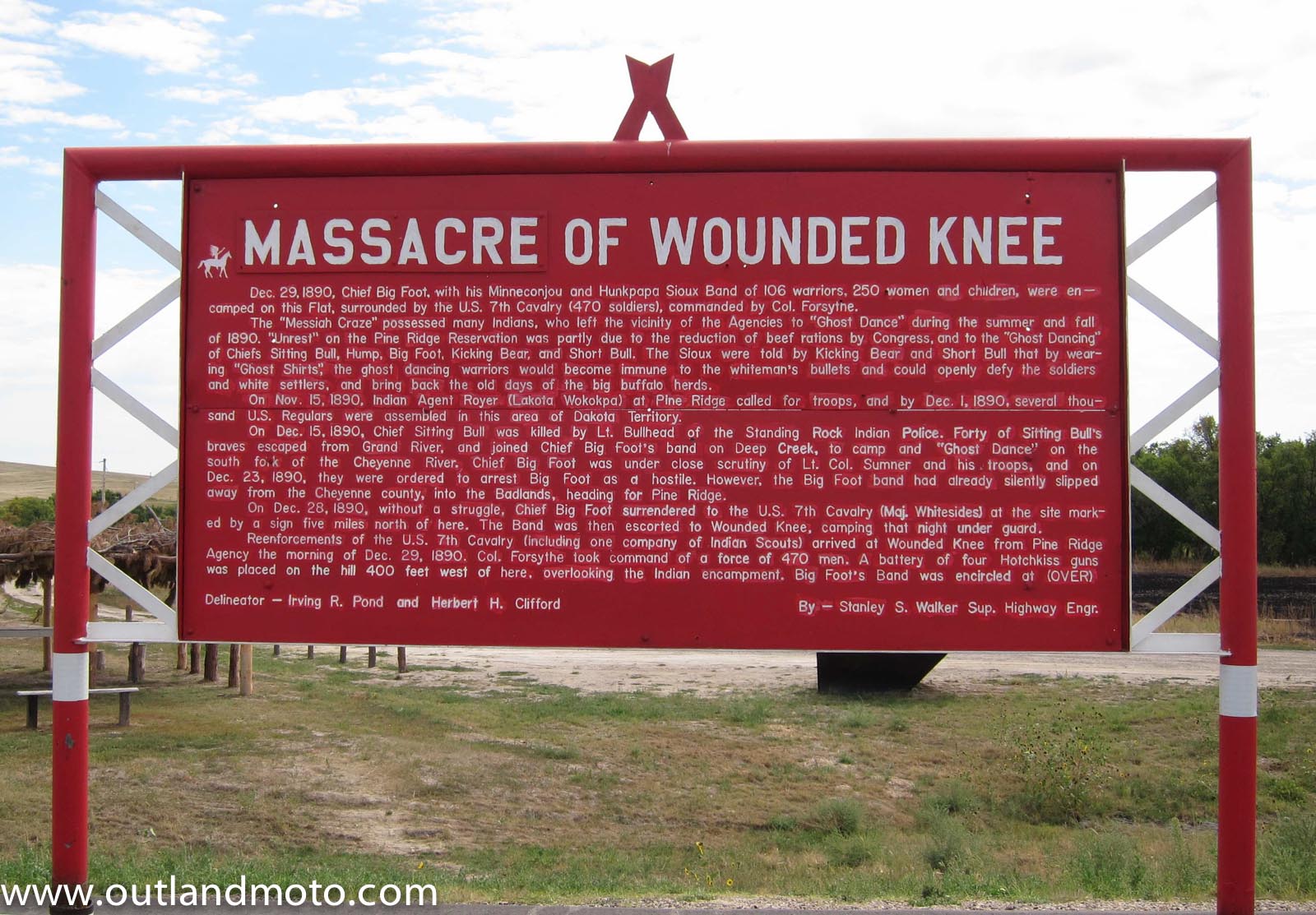
We pull off the side of the road, near the location of Wounded Knee. It is a strange thing. Almost everyone to whom I have spoken about this trip knew about Wounded Knee. Yet there is nobody around. No tourists, no activity of any kind, really. Craig rides over to what looks like a visitor’s center, which is about two hundred yards from where we stopped. There is a man there, and they begin to talk. A sign sits on the side of the road near us that has a summary of what occurred at Wounded Knee in 1890; the occurrence which made this location famous. It is old and in terrible condition. The paint is faded and pealing off the rusted metal of the sign. Many of the words are difficult to make out. Steve and I read the words, both of us being very conscientious to catch every one of them.
The sign reads:
“Dec. 20,1890, Chief Bigfoot, with his Mimmeconjou and Hunkpapa Sioux Band of 106 warriors, 250 women and children, were encamped on this flat, surrounded by the U.S. 7th Cavalry (470 soldiers), commanded by Col. Forsythe.
The “Messiah Craze” possessed many Indians, who left the vicinity of the Agencies to “Ghost Dance” during the summer and fall of 1890. “Unrest” on the Pine Ridge Reservation was partly due to the reduction of beef rations by Congress, and to the “Ghost Dancing” of Chiefs Sitting Bull, Hump, Big Foot, Kicking Bear, and Short Bull. The Sioux were told by Kicking Bear and Short Bull that by wearing “Ghost Shirts,” the ghost dancing warriors would become immune to the whiteman’s bullets and could openly defy the soldiers and white settlers, and bring back the old days of the big buffalo herds.
On Nov. 5, 1890, Indian Agent Royer (Lakota Wokokpa) at Pine Ridge called for troops, and by Dec. 1, 1890, several thousand U.S. Regulators were assembled in this area of the Dakota Territory.
On Dec. 15, 1890, Chief Sitting Bull was killed by Lt. Bullhead of the Standing Rock Indian Police. Forty of Sitting Bull’s braves escaped from Grand River, and joined Chiefs Big Foot’s band on Deep Creek, to camp and “Ghost Dance” on the south fork of the Cheyenne River. Chief Big Foot was under close scrutiny of Lt. Col. Sumner and his troops, and on Dec. 23, 1890, they were ordered to arrest Big Foot as a hostile. However, the Big Foot band had already silently slipped away from the Cheyenne county, into the Badlands, heading for Pine Ridge.
On Dec. 28, 1890, without a struggle, Chief Big Foot surrendered to the U.S. 7th Cavalry (Maj. Whitesides) at the site marked by a sign five miles north of here. The Band was then escorted to Wounded Knee, camping that night under guard.
Reenforcements of the U.S. 7th Cavalry (including one company of Indian scouts) arrived at Wounded Knee from Pine Ridge Agency the morning of Dec. 29, 1890. Col. Forsythe took command of a force of 470 men. A battery of four Hotchkiss guns was placed on the hill 400 feet from here, overlooking the Indian encampment. Big Foot’s Band was encircled at 9:00 am by a line of foot soldiers and cavalry. Chief Big Foot, sick with pneumonia, lay in a warmed tent provided by Col. Forsythe, in the center of the camp. A white flag flew there, placed by the Indians. Directly in the rear of the Indian Camp was a dry dry, running east to west.
The Indians were ordered to surrender their arms before proceeding to Pine Ridge. Capt. Wallace, with an Army detail, began searching the teepees for hidden weapons. During this excitement, Yellow Bird, a medicineman, walked among the braves, blowing on an eaglebone whistle, inciting the warriors to action, declaring that the “Ghost Shirts” worn by the warriors would protect them from the soldier’s bullets. A shot was fired, and all hell broke loose. The troops fired a deadly volley into the Council warriors, killing nearly half of them. A bloody hand-to-hand struggle followed, all the more desperate since the Indians were armed mostly with clubs, knives, and revolvers. The Hotchkiss guns fired 2-pound explosive shells on the groups, indiscriminately killing warriors, women, children, and their own disarming soldiers. Soldiers were killed by cross-fire of their comrads in this desperate engagement.
Surviving Indians stampeded in wild disorder for the shelter of the draw 200 feet to the south, escaping west and east in the draw, and north down Wounded Knee Creek. Persuit by the 7th Cavalry resulted in the killing of more men, women and children, causing this battle to be referred to as the ‘Wounded Knee Massacre’. One hour later, 146 Indian men, women and children lay dead in Wounded Knee Creek valley. The bodies of many were scattered along a distance of two miles from the scene of the encounter. Twenty soldiers were killed on the field, and sixteen later died of wounds. Wounded soldiers and Indians alike were taken to Pine Ridge Agency. A blizzard came up four days later, and Army detail gathered up the Indian dead and burried them in a common grave at the top of the hill northwest of here. A monument marks this grave.
“Ghost Dancing” ended with this encounter. The Wounded Knee battlefield is the site of the last armed conflict between the Sioux Indians and the United States Army.”
The words are stunning. “Why did this have to happen?” I think to myself. I make no attempt to speak it out loud, as it was obvious that both of us are having our own little crisis as we read the words on the sign. Craig returns and begins to read the sign also. His face slowly drops as he reads along.
As we read, Steve lets out a short grunt. I am curious about why. I have known Steve for a while. He is a thinker. And that noise means he is thinking. And it usually is going to be something worth hearing.
“What?” I ask.
“Nothing,” Steve replies.
It’s a process with Steve. He doesn’t surrender his thoughts the first time you ask. So I ask again.
“No really. What is it?”
Steve replies, “This sign isn’t for them,” he says. “It’s for us.”
I am confused. Why would he make this accusation? It’s a sign. The sign summarizes what happened here. I am not seeing anything more to it.
Steve pauses for a moment, eyes squinted combined with that subtle smirk he gets when he thinks he knows something you don’t.
He continues, “This sign is written from a very ‘American’ perspective of what happened here. I am sure that this sign was meant to be for the people who live here, but this sign, this monument, this is how we pay reverence to our past. I am sure that the people here have their own place and way in which they pay homage to what happened here. But I don’t think this place is it, and I doubt they would tell us where it is.”
Steve is right. We are visitors here. I feel almost like an intruder. I feel pity for what happened here, and the state these people were left in. Then suddenly that pity is checked by a feeling of silliness. I have spent the afternoon evaluating the state of this proud culture from the vantage point of my own culture, a culture that is vastly different from what I see here. My fundamental understanding of communal living, of success, of progress, is from a time and place outside of this land. The consumptive nature of our views have no place here. I have entered another country within our borders, another culture that did not adopt the European view of living. How impressive is that?! I am curious as to what we might have learned from this culture, had we paid more attention to it. What modern problems could this culture have solved for us?
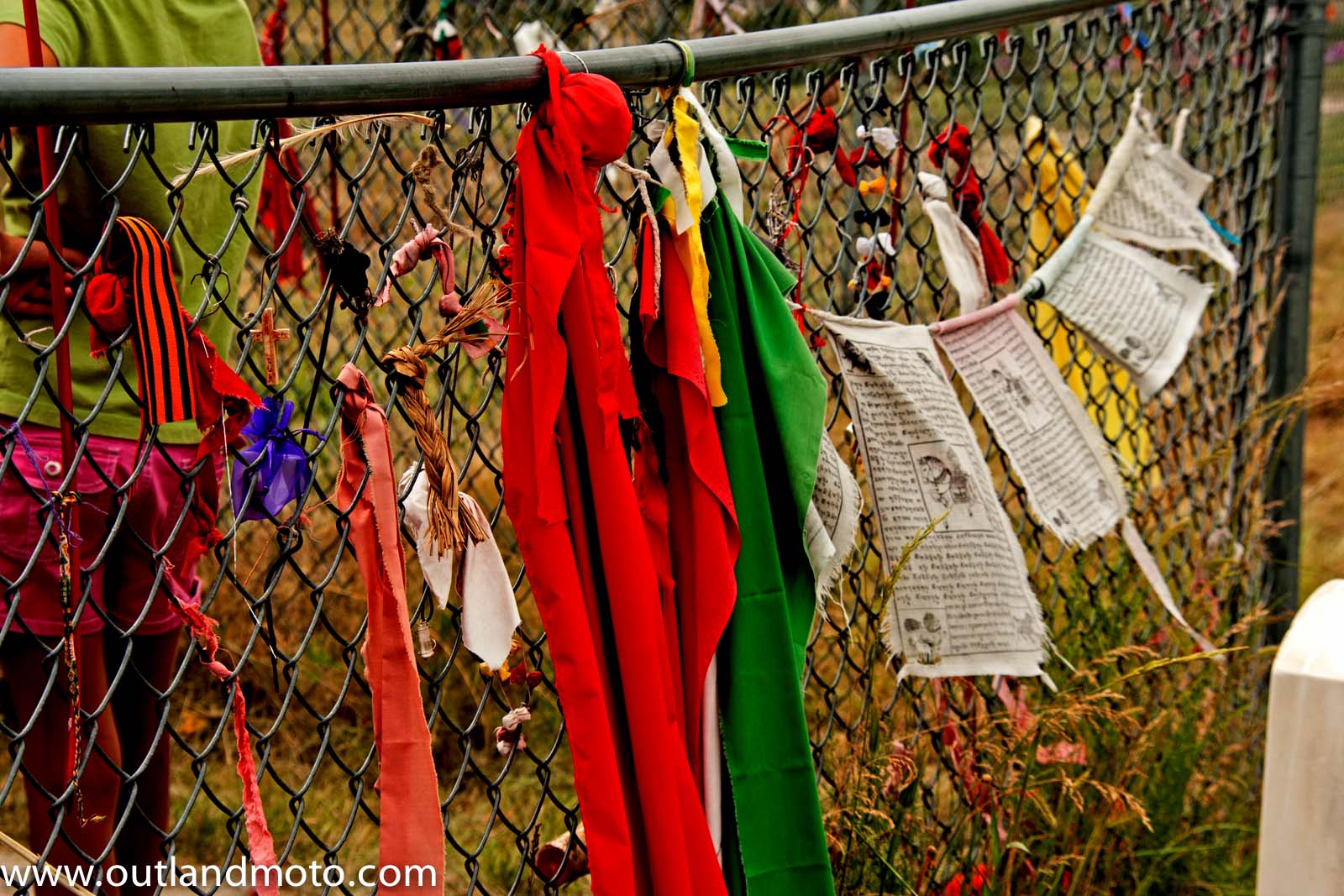
We are all silent, as we mount our trusty motorcycles to depart from this place. A few miles away is the culture we know, the culture we grew up in. I would like to say that we are eager to get back to it. But the feeling of being just “visitors” here has us feeling a bit unfulfilled. We want more time to know this place and this land. Instead we push on towards the next place. I know this place will be here long after I leave. And my bucket list is revised in my mind to include repeated and frequent visits to the great land. ~end
